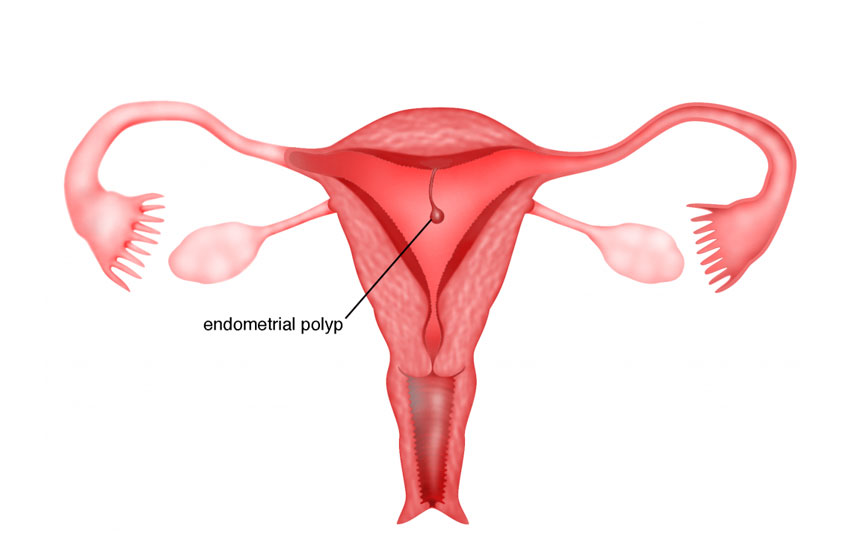- Uterine polyps are growths attached to the inner wall of the uterus that extend into the uterine cavity. Overgrowth of cells in the lining of the uterus (endometrium) leads to the formation of uterine polyps, also known as endometrial polyps. See the image above. These polyps are usually noncancerous (benign), although some can be cancerous or can eventually turn into cancer (precancerous polyps)
- Uterine polyps range in size from a few millimeters — no larger than a sesame seed — to several centimeters — golf-ball-size or larger. They attach to the uterine wall by a large base or a thin stalk.
- One can have one or many uterine polyps. They are usually contained within the uterus, but occasionally, they slip down through the opening of the uterus (cervix) into the vagina. Uterine polyps most commonly occur in women who are going through or have completed menopause, although younger women can get them too.
Symptoms &Diagnosis of Uterine Polyps
- Vaginal bleeding after menopause
- Bleeding between menstrual periods
- Irregular menstrual bleeding.
- Diagnostic Test For Uterine Polyps : Transvaginal ultrasound scan. Other investigations a doctor may suggest are hysteroscopy and endometrial biopsy.
Treatment for Uterine Polyps
- Uterine polyps are very rigid and mostly do not respond to treatment when they are above 5mm/0.5cm . However smaller polyps do sometimes clear on its own or with Hormone treatment . Treatment can be tried with 6 bottles of Laxtup capsules taken 3 capsules morning and 3 capsules evening before meal for 60 days then a new Transvaginal ultrasound scan can be done to assess treatment response.

